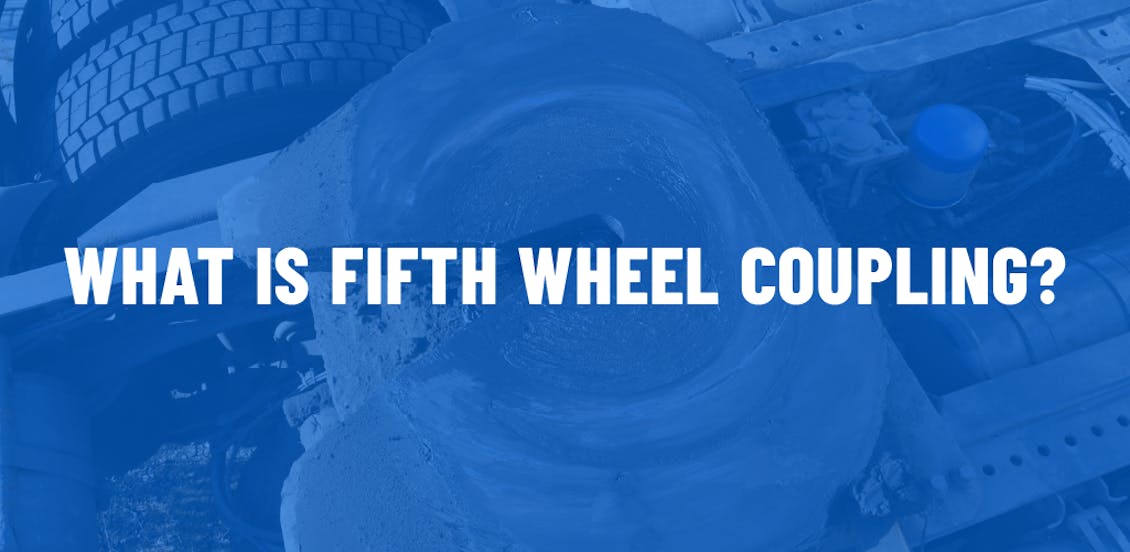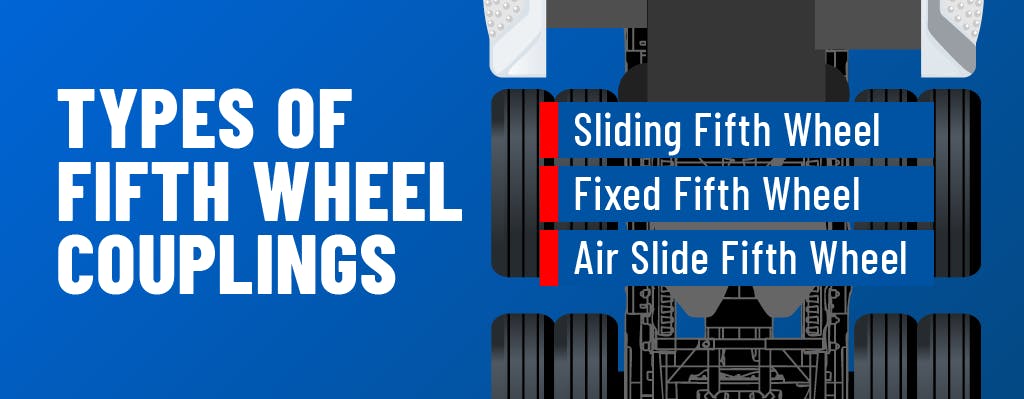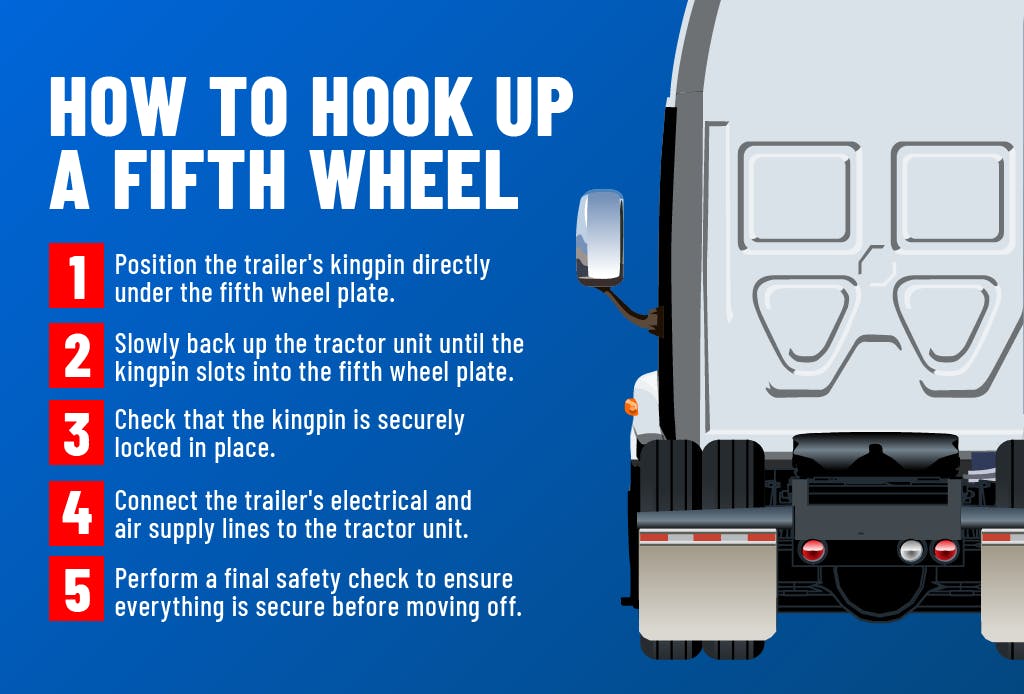Fifth Wheel Coupling: The Ultimate Guide | Hale Trailer
July 18th, 2023

The fifth wheel coupling is a critical component in the world of transportation, serving as the essential link between a semi-trailer and the towing truck, tractor unit, leading trailer, or dolly. This mechanical device is designed to provide a pivot point that allows the safe and efficient handling of heavy loads.
The term “fifth wheel” comes from the large circular plate, or “wheel,” that engages with the trailer’s kingpin to ensure a secure connection. This connection is crucial in maintaining the stability and control of the vehicle, especially when transporting heavy loads over long distances.
In the trucking industry, the fifth wheel coupling is a standard feature on most heavy-duty trucks. It’s designed to handle the weight and stress of pulling a semi-trailer, which can weigh several tons. The fifth wheel coupling is a testament to the engineering prowess of the trucking industry, enabling the transportation of goods across vast distances with relative ease.
Why is it Called a Fifth Wheel?
The term fifth wheel has historical roots dating back to the era of horse-drawn carriages. The fifth wheel was an extra wheel used to support the front axle of larger carriages, providing additional stability and maneuverability. This additional wheel was pivotal, allowing the carriage to turn smoothly and maintain balance, even with heavy loads. Over time, this concept was adopted and evolved to meet the needs of modern transportation.
In modern times, the trucking industry has adopted the term to describe the coupling device that connects a tractor unit to a semi-trailer. Despite the evolution of its function, the name has remained, symbolizing the critical role it plays in facilitating movement and control. The fifth wheel is no longer an actual wheel but a coupling mechanism that plays a pivotal role in the operation of commercial trucks.
Types of Fifth Wheel Couplings

There are several types of fifth wheel couplings, each designed to meet specific needs and applications. The most common types include:
- Sliding Fifth Wheel: This type allows for adjustment of the weight distribution by moving the coupling forward or backward on the 5th wheel on the truck. This flexibility can be crucial in maintaining balance and stability, especially when hauling unevenly distributed loads.
- Fixed Fifth Wheel: This type is permanently attached to the truck frame and does not allow for adjustment of weight distribution. While it lacks the flexibility of a sliding fifth wheel, it offers a robust and reliable connection between the truck and the trailer.
- Air Slide Fifth Wheel: This type uses air pressure to slide the coupling back and forth, allowing for easy adjustment of weight distribution. This feature can be particularly useful in situations where rapid adjustments are necessary, such as when dealing with shifting loads.
Each of these types has its own set of advantages and considerations, and the choice between them often depends on the specific requirements of the trucking operation.
How Does Fifth Wheel Coupling Work?
Fifth Wheel Plate
The fifth wheel plate is a flat, circular metal plate that forms the base of the fifth wheel coupling. It is mounted onto the tractor unit and features a slot that accommodates the trailer’s kingpin. The plate is typically made of heavy-duty steel to withstand the rigors of long-distance hauling. The design of the plate allows it to pivot, providing the flexibility needed to maneuver the trailer.
The fifth wheel parts’ names are often referred to in terms of their function. For example, the fifth wheel plate may also be referred to as the coupling plate or simply the “fifth wheel.” Despite the different terminology, the function remains the same: to provide a secure and flexible connection between the tractor unit and the trailer.
Kingpin
The kingpin is a solid steel pin that protrudes from the underside of the front of the semi-trailer. It is designed to slot into the fifth wheel plate, creating a secure connection between the trailer and the tractor unit. The kingpin is a critical component of the fifth wheel coupling, as it ensures the trailer remains securely attached to the tractor unit during transit.
The kingpin is designed to withstand significant force and stress, as it bears the weight of the trailer and its load. Despite its robust design, regular inspections are necessary to ensure the kingpin remains in good condition and is free from damage that could compromise its function.
Locking Mechanism
The locking mechanism is a critical component of the fifth wheel coupling. It is designed to lock the kingpin once inserted into the fifth wheel plate, ensuring a secure connection. The locking mechanism typically involves a lever or handle that engages and disengages the lock.
The locking mechanism is a crucial safety feature of the fifth wheel coupling. It prevents the trailer from becoming detached from the tractor unit during transit, which could lead to serious accidents. Regular checks and maintenance of the locking mechanism are essential to ensure it continues to function correctly.
Benefits and Drawbacks of Fifth Wheel Coupling
Benefits
There are many benefits to fifth wheel coupling, some of those include:
- Enhanced Stability: The fifth wheel coupling provides superior stability, especially when hauling heavy loads. This is due to the pivot point being located directly above the rear axle of the towing vehicle, which helps to distribute the weight evenly.
- Improved Weight Distribution: The design of the fifth wheel coupling allows for better weight distribution across the tractor unit and the trailer. This reduces strain on the vehicle’s suspension and braking systems, leading to improved performance and longevity.
- Ease of Maneuverability: The pivot point provided by the fifth wheel coupling makes it easier to maneuver the vehicle, especially around tight corners. This is particularly beneficial when navigating through narrow streets or crowded loading docks.
- Improved Safety: The secure connection between the tractor unit and the trailer enhances overall safety. In the event of a sudden stop or collision, the fifth wheel coupling helps to prevent the trailer from tipping over or becoming detached.
Challenges
While there are many benefits, there are also some challenges to be aware of:
- Time-Consuming: Hooking and unhooking the fifth wheel coupling can be time-consuming, especially for inexperienced drivers. This can lead to delays, particularly in busy loading or unloading areas.
- Increased Wear and Tear: The fifth wheel coupling is subject to significant wear and tear due to its constant use. Regular maintenance and replacement of worn parts are necessary to ensure the coupling continues to function correctly.
- Increased Cost: High-quality fifth wheel couplings can be expensive, adding to the overall cost of the vehicle. However, the benefits they provide in terms of safety and performance often justify the investment.
How to Hook Up a Fifth Wheel

- Position the tractor unit so that the fifth wheel plate is directly under the trailer’s kingpin.
- Slowly back up the tractor unit until the kingpin slots into the fifth wheel plate.
- Check that the kingpin is securely locked in place.
- Connect the trailer’s electrical and air supply lines to the tractor unit.
- Perform a final safety check to ensure everything is secure before moving off.
Knowing how to hook up a fifth wheel is a crucial skill for any truck driver, requiring precision and attention to detail to ensure a safe and secure connection. If you’ll be renting a semi-trailer in the near future, be sure to familiarize yourself with the latest semi-trailer tips.
FAQ
How do you couple and uncouple a fifth wheel?
Coupling involves aligning the fifth wheel plate with the trailer’s kingpin, slowly backing up the tractor unit until the kingpin slots into the fifth wheel plate, and ensuring it’s securely locked in place. Uncoupling involves disconnecting the electrical and air supply lines, releasing the locking mechanism, and carefully driving the tractor unit forward to disengage the kingpin from the fifth wheel plate.
What are the two types of fifth wheel hitches?
The two main types of fifth wheel hitches are the sliding fifth wheel and the fixed fifth wheel. The sliding fifth wheel allows for adjustment of the weight distribution, while the fixed fifth wheel is permanently attached to the truck frame. Both types have their own advantages and are suited to different types of hauling requirements.
What are the symptoms of coupling failure?
Symptoms of coupling failure may include difficulty steering, unusual noises when turning, or a noticeable decrease in stability or control. If you suspect coupling failure, it’s crucial to have your vehicle inspected by a professional immediately to prevent potential accidents.
Learn More with Hale Trailer
At Hale Trailer, we offer a wide range of trailer solutions, including a variety of fifth wheel couplings. Whether you’re looking to buy new equipment or need expert advice on maintaining your existing setup, our knowledgeable team is here to help. Visit our services page to learn more about what we offer or check out our trailer inventory to see our current selection. For more tips and information, don’t forget to visit our blog.
All the information on this website – https://www.haletrailer.com – is published in good faith and for general information purposes only. Hale Trailer Brake and Wheel does not make any warranties about the completeness, reliability and accuracy of this information. Any action you take upon the information you find on this website, is strictly at your own risk. Hale Trailer Brake and Wheel will not be liable for any losses and/or damages in connection with the use of our website.
